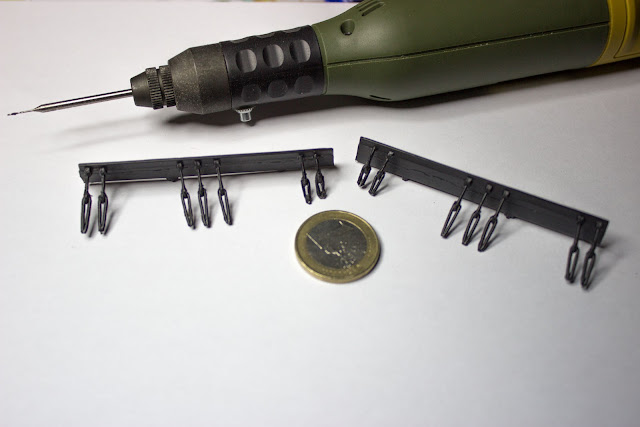Fixing more Eyebolts
Before assembling the deadeyes and channels, some additional eyebolts needed to be glued on the hull sides, together with a chesstree on each side (some holes needed adjustment first):
The chesstree before assembly...
... and in their right place on the hull...
Painting the deadeyes
There are three sets of deadeyes for each side of the hull.
For easier handling, I started painting the ropes before cutting them off their supports in the kit
Mizzen Channel and Deadeyes
After clipping the deadeyes off their supports, I needed to clean them and remove the extra material remaining from the molding process. This was a delicate task, requiring some drilling to clean up the holes. The deadeyes have two or three pieces that needed to be glued together.
When gluing the two sides, special care is needed to preserve the side holes, where the mast static rigging need to pass through at a later stage.
Having the deadeyes halves glued together, it is time to prepare and glue the corresponding channels.
It is important, when gluing the deadeyes to the channels, to set the correspondence. Viewed from the side, the deadeye and the channel should form a V shape, as in the picture below.
The final built, ready to be assembled on the hull:
Before gluing it to the hull, make sure that the lower "legs"of the channels are in contact with the hull. Then add a drop of glue on the tip of each, to ensure the rigid fixing on the hull.
Main Channel and Deadeyes
I applied the same procedure for the main channel and deadeyes. Cleaning the deadeyes and gluing them together...
... cleaning the channels
... gluing the channels to the deadeyes
... adding eyebolt pads

... and assembling them on the hull
Fore channels and deadeyes
... additional help needed to keep the pieces in place while glue dried, due to the fact that the plastic pieces were not straight:






















































































